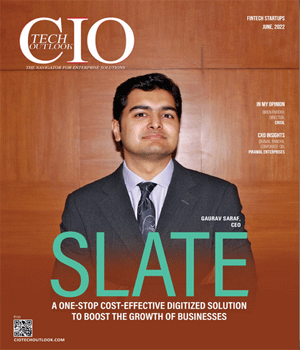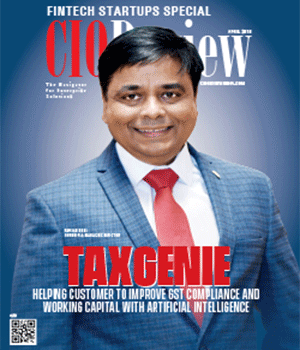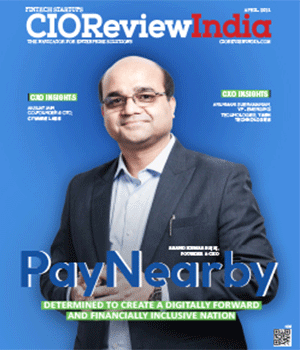
Fintechs in APAC Outwitting Global Peers in Innovation Outputs
CIOReviewIndia Team | Monday, 16 September 2019, 09:02 IST

September 16, 2019 – ACI Worldwide (NASDAQ: ACIW), a leading global provider of real-time electronic payment and banking solutions, and leading global research firm Ovum today launched the Culture of Innovation Index, a global cross value chain view of the factors that drive success across the Fintech ecosystem i.e banking, intermediary, merchant and corporate sectors. The Index identifies five types of organizations in Global Fintech Market, as defined by their approach to innovation and business transformation - Laggards,Emerging, Tech-led, Advanced and Trailblazers – and provides an interactive self-assessment tool to benchmark organizations against peers and competitors in the global fintech industry.
The research, based on a global survey of almost 1,200 enterprises, reveals that retail banking and fintechs are the leading sectors when it comes to Fintech innovation and payments innovation, with regulation playing a key part in forcing industry change. The merchants and corporates that are their customers are less successful in balancing cultural, organizational and technology drivers to achieve digital transformation.
According to the Index, real-time payments in fintech sector globally are a significant driver of innovation among financial institutions, while merchants and corporates are focused on new payment options (especially mobile), with payment security a continuing concern. In addition, trailblazers across the sectors planto move mission-critical workloads into public cloud infrastructure either this year or into 2020.
“The pace of change in the payments ecosystem continues to be relentless,” said Mike Braatz, chief product and marketing officer, ACI Worldwide. “More than ever before, innovation will be a significant driver of business success. While technology is – and will remain – an important part of the answer, it is people who truly change organizations. Businesses that align cultural change with technology leadership place themselves in the best position to thrive in the future.”
“The aim of the Index is to identify not only the factors that separate the most innovative businesses from the laggards, but also what this means in terms of product innovation,” commented Kieran Hines, head of industries, Ovum. “Digital transformation is not a single project – it is an ethos, an approach, focused on continuously translating business challenges into a series of initiatives and projects to drive the organization forward.”
Key findings:
APAC specific findings
- Fintechs in APAC score highly when it comes to innovation outputs (0.77) against global peers (0.67 for fintech in Europe and 0.59 in the Americas)
- Retail banks here excel at innovation outputs (scoring 0.66 on the index compared to 0.61 for retail banks on average), particularly regarding leveraging the public cloud for payments (96% of banks in APAC plan to move more of their mission-critical workloads to the public cloud in 2019/20, compared to 88% in the rest of the world), but too many are tech led (27%)
- APAC’s corporate banks are clear leaders compared to their peers in the index, particularly in their use of public cloud for mission-critical workloads (96%) and attitude to open banking. 96% believe that open banking will make it easier for them to leverage the fintech ecosystem, compared to 91% globally
Banks and Intermediaries
Real-time is a key driver of and enabler for innovation
- 96 percent of retail banks, 94 percent of corporate banks and 92 percent of intermediaries globally report that they will develop new and innovative services on top of their investment in RTP in 2019/20
Mission-critical workloads, including payments, can and should move to the cloud
- 82 percent of corporate banks, 74 percent of retail banks and 79 percent of intermediaries (84% of fintechs) globally plan to move mission-critical workloads into public cloud infrastructure in 2019/20
Capitalizing on potential of open payments is the biggest competitive differentiator
- 91 percent state that the move to open banking has helped change the way they approach delivering new products and services, with 89 percent actively exploring a platform strategy
Merchants
The merchant segments(telecoms, retail, digital goods and hospitality) featured in the Culture of Innovation Index are spread across the Laggard, Emerging and Tech-led categories, placing them behind fintech, retail and corporate banking in the overall ranking.
There are significant regional differences in terms of innovation
- In Europe, 35 percent of all merchants are classified as Laggards, compared to 30 percent globally. European retailers particularly fall behind their global peers, with 43 percent in the Laggard category, reflecting the challenges that many have faced as a result of the rapid shift in customer habits toward eCommerce
- In contrast, merchants in Asia are highly focused on investing in technology; 32 percent fall into the Tech-led group, with 26 percent in the Advanced category; only 19 percent are Laggards
- Merchants in the US are polarized,with 34 percent falling into the Laggards and 16 percent into the Trailblazers category, reflecting the growing gap between more traditional merchants and many of the more digital native businesses Customer experience is key
- Innovation in payments is focused on areas that enhance customer experience – new payment options, a focus on mobile (especially in-store), and a stronger, more seamless cross-channel payment experience
- Security initiatives like PSD2 and SCA are driving the need for technology innovation in order to balance fraud prevention with maximizing conversion rates; regulatory requirements may drive merchants to close the innovation gap relative to banks
Corporates
Most corporates are Laggards, with higher education, healthcare and utilities leading the sector
- Security remains a top concern for corporates with 50 percent experiencing theft of payment data (up from 22 percent in last year’s study)
- Investments in value-added services like mobile-optimized billing and digital customer experience will improve customer loyalty while driving innovation; 60 percent of Advanced and Trailblazer corporates already offer mobile-optimized billing and 57 percent currently offer personalized communications to collect payments
- Among the corporates segment (consumer finance, government, healthcare, higher education, insurance and utilities), 18 percent are in the Advanced and 4 percent qualify as Trailblazers, while 33 percent are in the Laggard category; at the sector level, higher education is among the leaders, with 29 percent of organizations in the Advanced category
CIO Viewpoint
Fintech: Emerging Fintech Trends To Watch Out...
By Sourabh Chatterjee, President & Head - IT, Web Sales & Travel, Bajaj Allianz General Insurance
By Ann Winblad, Co Founder, Hummer Winblad Venture Partners
Changing Times in for Financial Technologies
By Rajeev Bhatia, Head IT, NSDL Payments Bank
CXO Insights
How Financial Services Companies Are Striving...
By Jyoti Prakash, Regional Sales Director, India & SAARC Countries, Splunk
RPA In Action In The Financial Sector
By Pavan Kishore Kota Subramanya, Director, Intelligent Automation, Fiserv
Innovation is the Key Factor for Fintech to...




.jpg)
.jpg)



